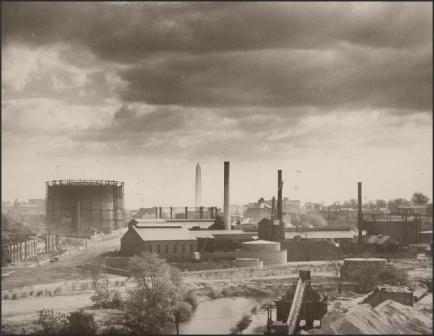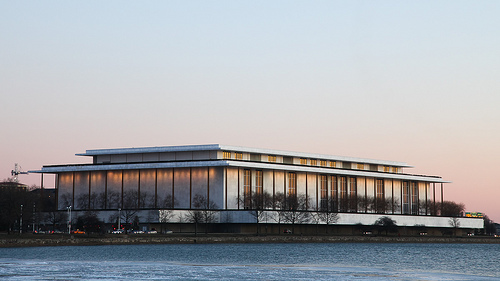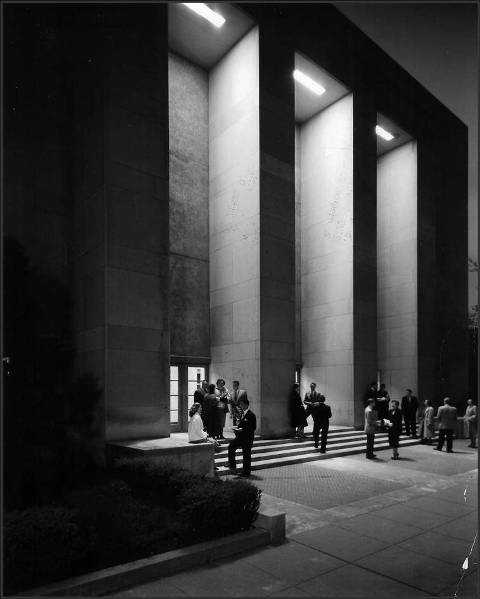August 12, 2011 | 9:00 AM | By Elahe Izadi
How Foggy Bottom Changed
FILED UNDER: Around the City, History, Foggy Bottom
Before the transformation of the Anacostia Waterfront and the Navy Yard began, there was Foggy Bottom. The fashionable Northwest neighborhood, now home to luxury condominiums, pristine river views and affluent seniors, was characterized by tenement dwellings, smoke stacks and slums 60 years ago.
At the end of the 18th century, the riverbanks now dominated by the Kennedy Center were D.C.’s gang-ridden and malaria-infested industrial hub. Breweries, lime kilns, shipyards and the Washington Gas Light Company facility brought an influx of European immigrants to Foggy Bottom. Foggy Bottom residents, mostly unskilled manual laborers, often spoke no English.

Courtesy of GWU permalink
Virginia Avenue skyline with the tanks and smokestacks of the Washington Gas Company, circa 1928.

Tim Wang / Flickr permalink
The Kennedy Center overlooks the Potomac River. Its riverbanks were once D.C.'s malaria-infested industrial hub.
Courtesy of GWU permalink
Looking south down 23rd and I streets circa 1938.
Historic photo courtesy of GWU/Mary-Alice Farina permalink
On left: Roof of the Hattie M. Strong Residence Hall for Women circa 1943. On right: The Washington Monument from two Foggy Bottom rooftops.
Courtesy of GWU permalink
Erection of Clark Mills statue of George Washington on Washington Circle, Feb. 22, 1860
Eldra Walker/ Mary-Alice Farina permalink
Pictured left: Snow's Court alley dwellings, circa 1935. Pictured right: Snows Court today.





